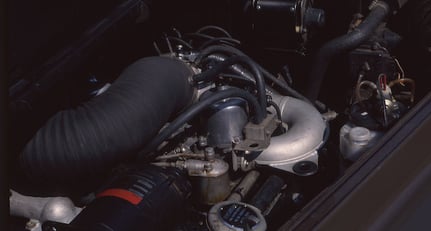1970 Rolls-Royce Phantom VI
-
Year of manufacture1970
-
Chassis numberPRH4597
-
Engine number4597
-
Lot number346
-
DriveLHD
-
ConditionUsed
-
Number of seats2
-
Location

-
Exterior colourOther
-
Drivetrain2wd
-
Fuel typePetrol
Description
Sold in aid of the National Motor Museum Trust
1970 Rolls-Royce Phantom VI Limousine
Coachwork by H J Mulliner, Park Ward Ltd
Registration no. BML 77H
Chassis no. PRH4597
Engine no. 4597
With development of its dependable six-cylinder engine nearing an end and facing competition from faster rivals in the United States market, Rolls-Royce turned to V8 power as the 1960s approached. Introduced in the autumn of 1959, the new 6,230cc all-alloy engine graced the Rolls-Royce Silver Cloud II and Bentley S2 as well as the Rolls-Royce Phantom V. Introduced at the same time, Rolls-Royce's new limousine model, the long-wheelbase Phantom V, effectively replaced both the royalty/heads of state-only Phantom IV and the Silver Wraith. Built on a much modified and strengthened Silver Cloud II chassis, the new Phantom measured over 6 metres (19' 6") in length and enabled coachbuilders to combine the desirable qualities of spacious interior accommodation with generous boot space and graceful lines. A lower final drive ratio ensured that, while top speed was a little down on that of its stable-mates, though still in excess of 100mph, the new Phantom could all but match them for acceleration.
Rolls-Royce's in-house coachbuilder Park Ward Limited produced what was in effect the 'standard' seven-passenger limousine coachwork for the Phantom V. The usual upholstery for the front compartment was leather, which was also included in the list of alternatives for the rear together with West of England cloth. As one would expect in a car of this class, a cocktail cabinet was often incorporated into the rear compartment, while electric windows and air conditioning were among the other options.
Park Ward's design remained substantially unaltered until the introduction of the Silver Cloud III and Bentley S3 in the autumn of 1962 when it was revised to incorporate the new models' four-headlamp lighting arrangement and a completely new above-waistline treatment. Now built by the combined firm of H J Mulliner, Park Ward Ltd, the car lived on into the 1990s as the Phantom VI, its passing in 1992 marking the final demise of the separate-chassis Rolls-Royce.
The last word in motoring luxury in its day, Phantom VI chassis number 'PRH4597' was supplied new via Mead of Maidenhead Ltd to Lady Beaverbrook, widow of press baron Lord Beaverbrook, whose address is given as 121 Fleet Street, London EC4. Accompanying copies of the factory paperwork reveal that the Phantom was originally finished in Astrakhan with green Bridge of Weir hide interior, and was equipped with fog lamps, safety belts and a Radiomobile radio. The cocktail cabinet was not required. Lady Beaverbrook kept the Rolls-Royce for the next three decades before donating it to the National Motor Museum Trust in 1999. Kept in museum storage for the last 16 years, the car will require re-commissioning before returning to the road and would also benefit from some attention to the paintwork.







